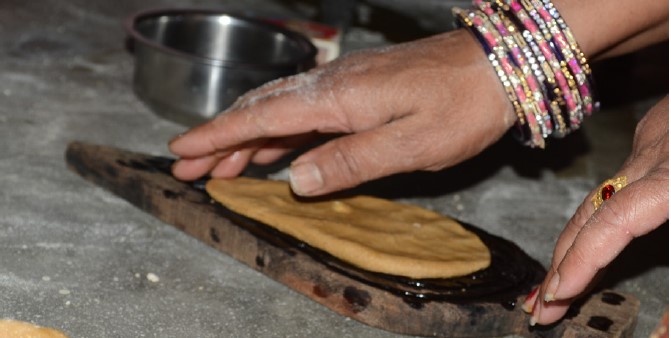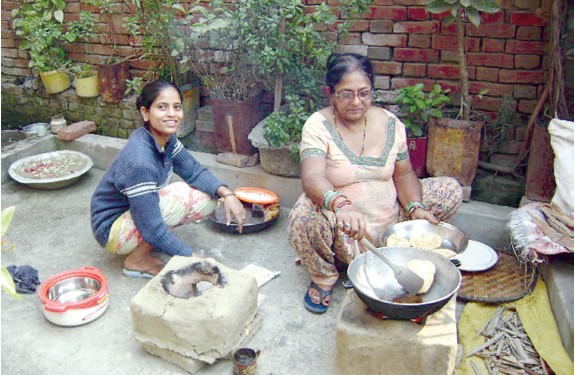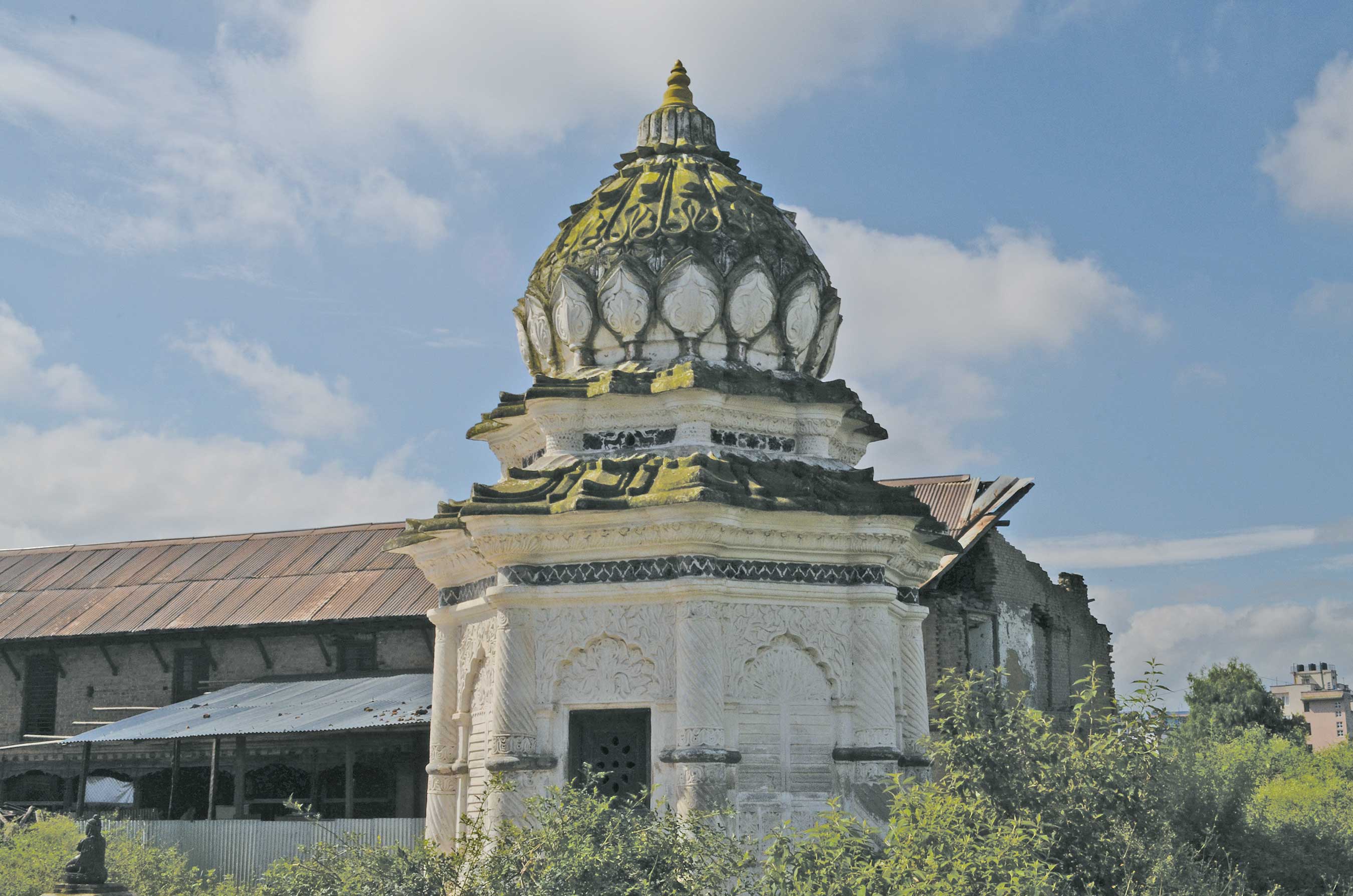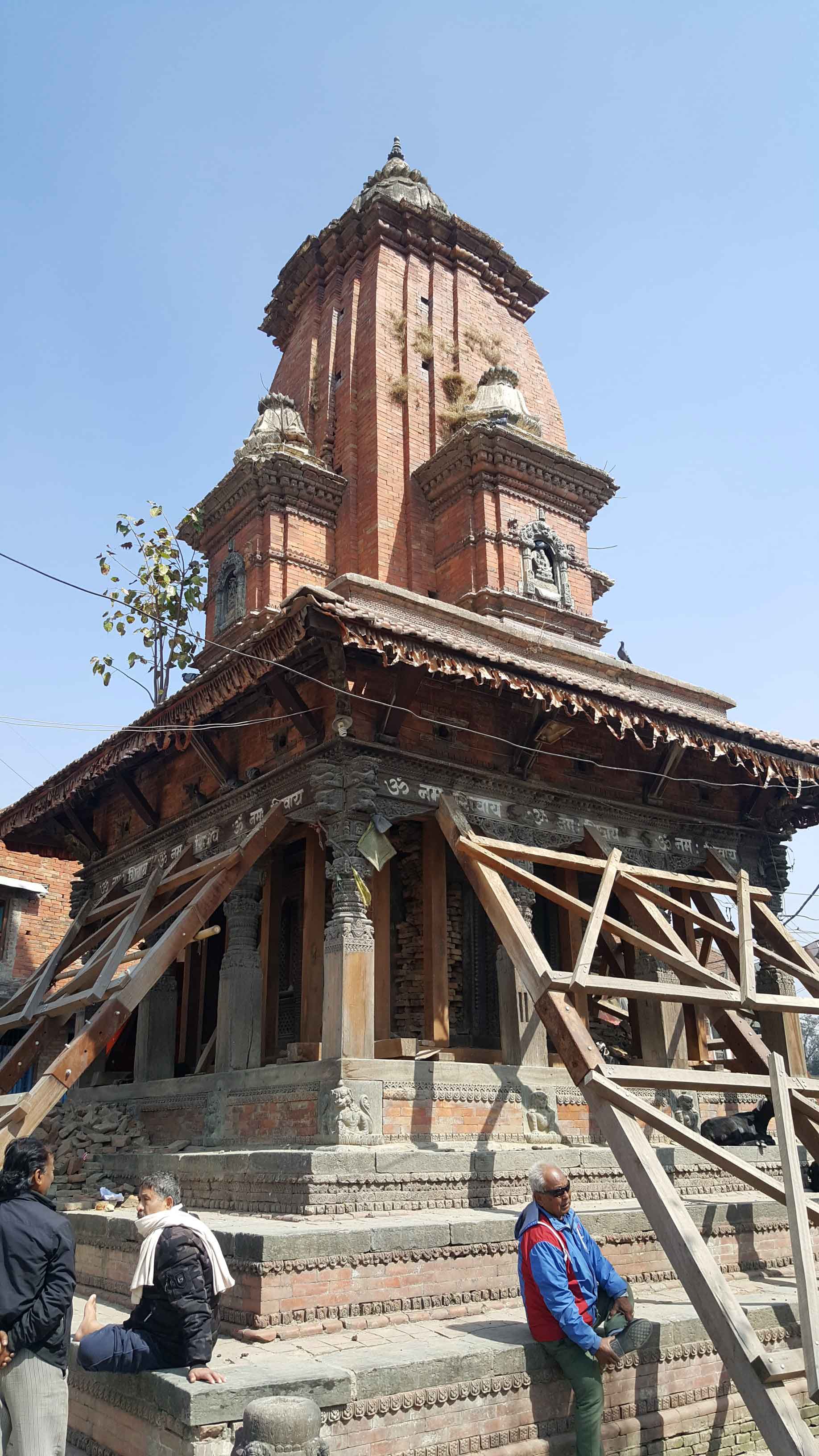The first time I visited Janakpur was during Chhat that falls just after the Nepali festival of Tihar. Whereas Tihar is a national festival, Chhat is celebrated only in the Eastern Terai. Probably the best place to witness this festival is in Janakpur, with its ponds – auspicious places to greet the sun god on the morning of Chhat.
Staying in an Australian friend’s small rooftop apartment, she knew the best place to get fresh fruit – pineapple, bananas and that Nepali fruit which looks like a grapefruit and is often served with chilli and spices. She also knew the best place to eat typical Mithili food such as anarsa, similar to a hole-less donut made of rice flour, ghee and sugar. During that trip we took the only train in Nepal, sadly no longer running, out into the surrounding villages. With their own ponds, the villages were also preparing to celebrating Chhat. Huge plates of towering fruits and sweets were being readied to offer to the sun god. Sweets, puffed rice, and special dishes such as rashiyaw, were served to us before we walked back along the dusty road into Janakpur town to get an early night before our 4am wake-up call to join the festivities.
Fast forward a decade, and I now have Mithili friends whose mother reintroduced me rashiyaw along with another Chhat  speciality, curryburry. Like the best festival food, rashiyaw is cooked outside on a cow dung stove in a ceramic pot. The rice which forms the basis of this dish is sweetened with jiggery, coconut, dried dates and ginger and eaten either alone or with deep fried bread known as puri. However, the most traditional Chhat and Mithili New Year food is curryburry. The ‘burry’ being little balls of ground masuri dal combined with onion, green chilli, coriander, turmeric, garlic and salt. The secret, I am told, is to mix everything together for at least half an hour so that the taste of each ingredient is highlighted when cooked. Meantime ajwain and mangrel (caron and black nigella seeds) are fried in a pan along with onions, bay leaves, dried chilli, cumin and asafoetida. After frying, water and yoghurt in equal parts is added to form the curry. The original dish would have been prepared with mahi or whey, which would have taken the women of the house months to collect by boiling and skimming milk. Once this mixture is almost at boiling point, the burry balls are added to create a wonderful dish with a quirky name!
speciality, curryburry. Like the best festival food, rashiyaw is cooked outside on a cow dung stove in a ceramic pot. The rice which forms the basis of this dish is sweetened with jiggery, coconut, dried dates and ginger and eaten either alone or with deep fried bread known as puri. However, the most traditional Chhat and Mithili New Year food is curryburry. The ‘burry’ being little balls of ground masuri dal combined with onion, green chilli, coriander, turmeric, garlic and salt. The secret, I am told, is to mix everything together for at least half an hour so that the taste of each ingredient is highlighted when cooked. Meantime ajwain and mangrel (caron and black nigella seeds) are fried in a pan along with onions, bay leaves, dried chilli, cumin and asafoetida. After frying, water and yoghurt in equal parts is added to form the curry. The original dish would have been prepared with mahi or whey, which would have taken the women of the house months to collect by boiling and skimming milk. Once this mixture is almost at boiling point, the burry balls are added to create a wonderful dish with a quirky name!
Today Janakpur might be dusty and the silent cycle rickshaws replaced by noisy tuktuks, but tradition still lives on through its food. Bon appétit!











